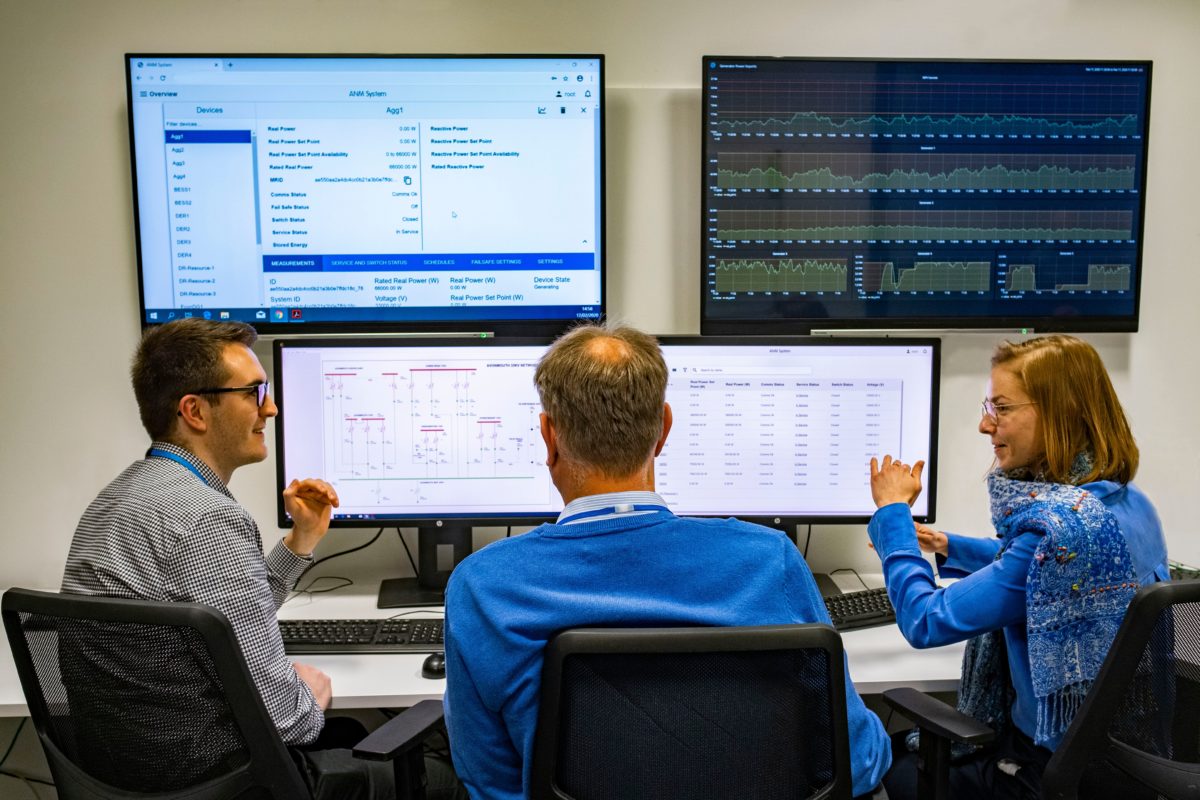A software system designed to free up electric grid capacity in a network in New York State proved so successful it was able to accommodate almost six times more solar generation capacity than planners of the trial had anticipated.
Scottish company Smarter Grid Solutions was tasked by Spanish-owned electric utility Avangrid with accommodating an extra 2.6 MW of solar generation capacity into the latter's network in Spencerport after three 5 MW solar farms applied for grid permits.
pv magazine print edition
The energy software company's Flexible Interconnect Capacity Solution (FICS), which has been successfully deployed on U.K. grids, ended up being able to accommodate all 15 MW of extra solar capacity which would otherwise have been unable to be hosted on the distribution system.
And with the U.S. National Renewable Energy Laboratory (NREL) having predicted the FICS software could have the potential to treble the capacity of grid networks without any need for costly infrastructure investment, Smarter Grid Solutions is hoping the success achieved by its distributed-energy resource management system (DERMS) in the U.K. can be rolled out worldwide.
Graham Ault, of Smarter Grid Solutions, explained how the real-time electricity flow management system is already helping to integrate more than 400 MW of renewable energy generation capacity into grids which would otherwise have been deemed as having no free capacity.
“The FICS solution works in the same way as traffic lights and speed controls on public roads,” said Ault. “You can avoid building lots more roads and still achieve the maximum throughput of vehicles if you regulate the flow of traffic with smarter approaches like dynamic use of extra lanes, dynamic speed limits and traffic lights. That’s how the saving in grid infrastructure investment works – making the most out of existing infrastructure by monitoring traffic flows and deciding when to apply the different controls.
“The SGS software monitors the flow of power in the grid and compares that to grid capacity – like monitoring flowing and standing [or] jammed vehicles on roads – the sources of … problems. For the grid that’s the solar generators that are exporting at high power; on roads that’s … side roads, lanes, etc. [FICS] then [issues] signals to make everything flow better. For FICS, that takes the form of an instruction to a PV site to regulate the export of power upwards or downwards.
“Achieving a solution that achieves that on a second by second basis, 365 days a year is quite complex but our system now manages over 400 MW of renewable generation for grid operators with excellent results.”
This content is protected by copyright and may not be reused. If you want to cooperate with us and would like to reuse some of our content, please contact: editors@pv-magazine.com.




I was waiting for something original from the “tool” that the article reported on. But there was nothing. The only thing the software from Smarter grids Solutions does, is monitor in real time renewable output, monitor network capacity (real time) and make a decision: constrain renewables off, or not. Quoting from the article:
“For FICS, that takes the form of an instruction to a PV site to regulate the export of power upwards or downwards.”
So it’s a real time constraint system. That’s all. Missing is: how much energy is constrained off? Because that is completely missing. Also, how does the business case for the PV plant stand up (never mentioned) under constraint conditions.?
You are exactly right on this. It is technically not “adding capacity” as the grid can still only manage so much energy. Instead, it is managing excess capacity by leaving a huge amount of potential energy in limbo via throttling output of the renewable energy. Interesting that is does not mention regulation the carbon generating generation sources, only the renewable generators. Wouldn’t it make more sense to reduce the output of the polluting generators first? Oh, right, they can’t respond as quickly as the renewables…
This quote implies that PV is a problem, not a solution:
“The SGS software monitors the flow of power in the grid and compares that to grid capacity – like monitoring flowing and standing [or] jammed vehicles on roads – the sources of … problems. For the grid that’s the solar generators that are exporting at high power; on roads that’s … side roads, lanes, etc. [FICS] then [issues] signals to make everything flow better. For FICS, that takes the form of an instruction to a PV site to regulate the export of power upwards or downwards.”